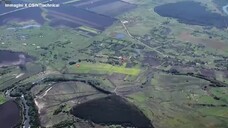Analysis of the marks left on the geomagnetic field during brick production has made it possible to reconstruct the history of the Ishtar Gate complex in Babylon, which was built by King Nebuchadnezzar II and is conserved in the Pergamon Museum in Berlin.
'Archaeomagnetism' made it possible to confirm that the gate was built after the Babylonian conquest of Jerusalem in 586 BC.
The paper on the study was published in the Plos One journal and it is the result of research coordinated from Italy, with a group from National Institute of Geophysics and Volcanology (INGV) led by Anita Di Chiara, and the participation of the Pergamon Museum and the universities of San Diego and Tel Aviv.
"If the bricks had been produced at the same time, they would have registered the same magnetic-field intensity," said Di Chiara.
"If, on the other hand, the values of the magnetic-field strength measured in the laboratory were different, it would mean that they were produced at different times.
"The results revealed that the intensity recorded is statistically indistinguishable and probably subsequent to the conquest of Jerusalem in 586 BC".
Archaeomagnetic dating generally has an uncertainty of centuries because variations in the geomagnetic field are very slow.
But the greater degree of precision in this case is down to the 'Levantine Iron Age geomagnetic Anomaly', when there were periods of extremely high intensity values and rapid changes in the field over a few centuries.
Riproduzione riservata © Copyright ANSA













